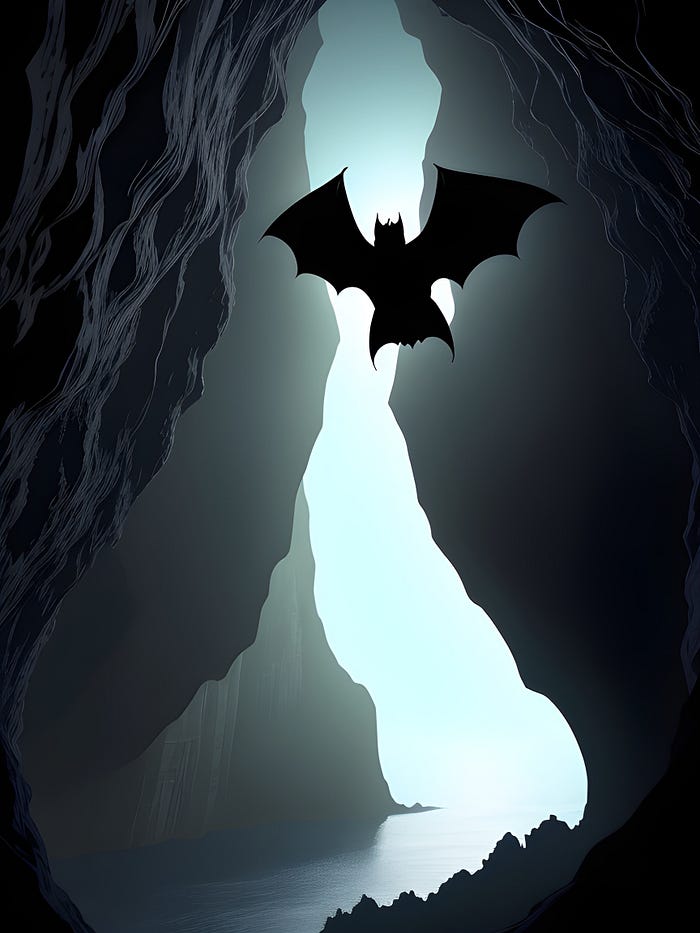
https://podcasters.spotify.com/pod/show/joycey-mac-snail6/episodes/What-is-it-like-to-be-a-Planet-e2hl41o
The study of consciousness has been a long-standing challenge for philosophers and scientists alike. Two prominent works that have addressed this issue are “What is it like to be a Bat?” by Thomas Nagel and “Solving the Hard Problem: Consciousness as an Intrinsic Property of Magnetic Fields” by Todd Murphy. These works have proposed new theories of consciousness, raising questions about the nature of subjective experience and the relationship between the brain and consciousness.
Today, we will explore these works and the questions they raise, and consider the implications of these theories for our understanding of consciousness and the world around us. In addition, we will discuss how the idea of a living planet has appeared in human culture from myth to science fiction, challenging our assumptions about the nature of reality and inspiring us to think beyond the limits of our current understanding.
Finally, we will provide resources for further exploration, so readers can continue to engage with these fascinating topics beyond the scope of this article.
In “What is it like to be a Bat?”, Thomas Nagel presents a powerful critique of reductionism in the study of consciousness. He argues that consciousness is a subjective experience, and that this subjective experience cannot be fully understood by simply analyzing an organism’s objective physical characteristics. Nagel uses the example of bats to illustrate his point, pointing out that although we can learn much about the physical and behavioural characteristics of a bat, we can never fully understand what it is like to experience the world as a bat does.
Nagel’s argument highlights an important limitation of scientific inquiry into consciousness. While science can provide valuable insights into the workings of the brain and the behaviour of organisms, it cannot fully capture the subjective experience of consciousness. This limitation has been a major challenge for researchers studying consciousness, as it raises questions about the completeness of any scientific explanation of the phenomenon.
Moreover, Nagel’s argument has broader implications for our understanding of the world around us. It suggests that subjective experience is an essential component of reality, and that any complete understanding of the world must take this into account. This idea challenges traditional scientific reductionism, which seeks to explain complex phenomena solely in terms of their component parts, and suggests that consciousness may be an irreducible aspect of the world that cannot be fully explained by physical processes alone.
By acknowledging the subjective nature of consciousness, we can begin to explore new avenues of inquiry that take into account the full complexity of the phenomenon. This may involve developing new methods of research that capture the subjective experience of consciousness, or exploring new philosophical frameworks that can better incorporate the subjective ****aspect of reality. Ultimately, by recognising the subjective nature of consciousness, we can gain a deeper understanding of ourselves and the world around us.

In “Solving the Hard Problem: Consciousness as an Intrinsic Property of Magnetic Fields”, Todd Murphy presents a provocative theory of consciousness that challenges traditional views of the phenomenon. Murphy argues that consciousness is an intrinsic property of magnetic fields, rather than a product of the physical brain as traditionally assumed. He suggests that the complex interactions between magnetic fields in the brain give rise to subjective experience, and that this can explain many of the features of consciousness that have proven difficult to explain with traditional approaches.
The idea that consciousness is an intrinsic property of magnetic fields is a radical departure from traditional views of consciousness. It suggests that consciousness may exist beyond the physical brain, and that it may be possible for other systems to exhibit consciousness as well. Murphy’s theory also challenges the notion that consciousness is solely a product of neural activity, and raises questions about the relationship between the brain and consciousness.
Despite its radical nature, Murphy’s theory has gained some support from recent experiments that have demonstrated the role of magnetic fields in brain function. For example, studies have shown that magnetic fields can be used to stimulate or inhibit neural activity, suggesting that they play an important role in brain function. While more research is needed to fully evaluate the theory, it presents an intriguing new approach to the study of consciousness that may have important implications for our understanding of the mind and brain.
Murphy’s theory that consciousness is an intrinsic property of magnetic fields challenges traditional views of the phenomenon and raises important questions about the nature of consciousness and its relationship to the physical world. It is a thought-provoking concept that is likely to inspire further research and debate in the field of consciousness studies.

The question of “What is it like to be a Planet?” builds on the theories presented by Nagel and Murphy, exploring the possibility that consciousness is an intrinsic property of magnetic fields. If this is the case, then it follows that the Earth, with its own magnetic field, may possess some form of consciousness. This idea raises intriguing questions about the nature of planetary consciousness and its relationship to our own.